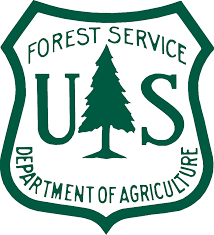Details and Metadata
Printer-friendly version View XML version Download Ecological Metadata Language file
Methods
The methods followed in the creation of the dataset, including description of field, laboratory and processing steps, and quality control procedures
Current Methods
Plot establishment
Started: 1200-08-2920 plots were established in different areas of the Green Mountain National Forest. Plot selection parameters included lack of disturbance, minimum 1/4 from roads, common ecological land and soil types, in uniform areas with less than 35% slope.
Plot design generally follows FIA procedures with exceptions made for soils and lichen sampling. A plot center and 3 subplots were established, with an area between them for soil sampling. Three trees near subplot centers were scribed; 2 at dbh and 1 at the base.
Data collection
Plots were sampled for vegetation, lichen, tree, down woody debris, and soil data.
Soil sampling pits
Three 2X3 soil sampling pits were dug/plot. One 4 ounce sample/soil layer was collected, and bulk samples were taken at the Oi and Oe, A and Oa horizons, and from the 1st 10 inches of the B horzin, and at 60-70 cm belwo the ground surface.
Vegetation monitoring
Vegetation was monitored in 24-foot diameter circular subplots surrounding each subplot center. All plant species within the circle were identified and each species’ abundance was estimated. Vegetation was divided into height classes and relative abundances of species were estimated. A small (1 m²) vegetation plot was placed along each of three transects radiating at set degrees from the subplot center. All vegetation growing within these 1 m² vegetation plots was inventoried.
Subplot inventory
Trees, saplings, and down woody material were inventoried in each subplot. Samplers measured diameters and estimated heights of each tree within the 24-foot radius subplots, measured diameters and heights of all saplings within a 6.8-foot radius microplot, and measured sizes and described decay classes of coarse woody material along a transect. Fine woody material was not measured.
Lichen collection
Lichen specimens were collected to determine species diversity. Lichens were collected throughout each 58.9-foot radius annular plot. Each specimen was placed in its own brown paper bag and labeled with plot number, collection number, date, abundance, and occasional microhabitat notes, for id in the laboratory. As specimens were collected in the field, the sampler estimated the abundance of each species in the plot.
Soil sample processing
Soil samples were dried at the Mount Tabor Work Station of the GMNF at the end of each field season. During the drying process, the soil samples were laid out to air dry on clean plastic tarps in the fall. Samples took 2-3 months to dry. Samples were then bagged and delivered to the Hubbard Brook Experimental Forest for analysis of a full complement of chemical parameters. Archived soil samples will be stored at Hubbard Brook.
Dataset Fields
Detailed documentation of the fields comprising the dataset, including the type of measurement, units where applicable, and any controlled vocabularies or code lists present in the data
Field Name Caption Description Additional Information PlotID PlotID PlotID
Nominal PlotSpeciesNotes PlotSpeciesNotes PlotSpeciesNotes
Nominal Quad1Presence Quad1Presence The presence (1) or absence (0) of a particular species in quadrant 1.
Nominal Quad2Presence Quad2Presence The presence (1) or absence (0) of a particular species in quadrant 2.
Nominal Quad3Presence Quad3Presence The presence (1) or absence (0) of a particular species in quadrant 3.
Nominal SpCoverLayer1_2 SpCoverLayer1_2 A code that refers to a range of percentage cover for any species present in the canopy layer 0-6 feet above the ground. -999 values indicates nothing recorded, 0 indicates that trace was recorded recorded as t in the field.
Ordinal SpCoverLayer3 SpCoverLayer3 A code that refers to a range of percentage cover for any species present in the canopy layer >6-16 feet above the ground. -999 values indicates nothing recorded, 0 indicates that trace was recorded recorded as t in the field.
Ordinal SpCoverLayer4 SpCoverLayer4 A code that refers to a range of percentage cover for any species present in the canopy layer >16 feet above the ground.-999 values indicates nothing recorded, 0 indicates that trace was recorded recorded as t in the field.
Ordinal Species Species A code that coordinates to a particular species.
Nominal SpecimenLabelNumber SpecimenLabelNumber Labeled IDs for unknown species.
Nominal SpTotalCover SpTotalCover A code that refers to a range of total percentage cover for a particular species. -999 values indicates nothing recorded, 0 indicates that trace was recorded recorded as t in the field.
Ordinal SubplotID SubplotID SubplotID
Nominal UniqueSpNumber UniqueSpNumber UniqueSpNumber
Nominal Year Year Year that data was collected
DateTime Date/Time Format: YYYY Sampling Equipment
Equipment and software used to collect data, including how that equipment was used.
No sampling equipment recorded for this dataset
Site Characteristics
The spatial extent of the dataset site coverage, and descriptions of the spatial extent and context for the data collection
No site characteristics recorded for this dataset


 Details
Details